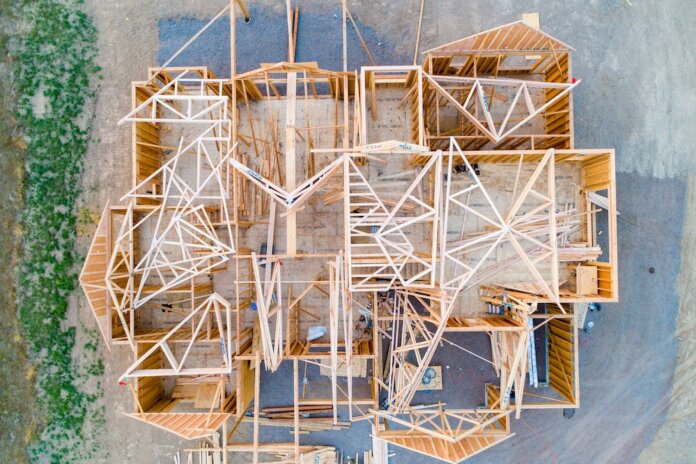Housing starts surged in December, increasing 15.8% compared with November to reach a seasonally adjusted annual rate of 1.499 million, according to the U.S. Census Bureau.
Most of the increase was multifamily construction.
Year-over-year, housing starts were down 4.4% compared with December 2023.
Starts of single-family homes in December were at a rate of 1.05 million, an increase of 3.3% compared with November. Starts of multifamily homes (five units or more per building) were at a rate of 418,000, an increase of 58.9% compared with the previous month.
An estimated 1,364,100 housing units were started in 2024, a decrease of 3.9% compared with December 2023, according to the bureau.
Building permits, however, dipped slightly in December. At a rate of 1.483 million, they were down 0.7% compared with the previous month and were down 3.1% compared with December 2023.
Permits for single-family homes were at a rate of 992,000, an increase of 1.6% compared with November. Permits for multifamily properties were at a rate of 437,000, a decrease of 5.8% compared with November.
An estimated 1,471,200 housing units were authorized by building permits in 2024 – a decrease of 2.6% compared with 2023.
Housing completions were at an annual rate of 1.544 million – a decrease of 4.8% compared with November and down 0.8% compared with December 2023.
An estimated 1,627,900 housing units were completed in 2024 – an increase of 12.4% compared with 2023.
“Single-family home building increased 6.5 percent for 2024, as builders added more supply in a market continuing to face a housing affordability crisis due to elevated mortgage interest rates and higher construction costs,” says Carl Harris, chairman of the National Association of Home Builders (NAHB), in a statement. “Nonetheless, the industry expects to see a slight gain for single-family home building in 2025 because of a persistent housing shortage and ongoing solid economic conditions.”
“While December was a solid month for apartment starts, the sector ended 2024 down 25 percent in terms of total starts,” adds Robert Dietz, chief economist for NAHB. “In December, and on a three-month moving average basis, there were 1.7 apartments completing construction for every one apartment starting construction. Multifamily construction will stabilize later in 2025 as more deals pencil out, with the industry supported by a low national unemployment rate.”
Odeta Kushi, deputy chief economist for First American, says the recent increase in starts and permits aligns with the increase in builder confidence.
“On average in 2024, single-family home starts were at their second highest level since 2007, with the one exception being 2021,” Kushi says. “This means more homes on the market and more options for home buyers, which is good news for a housing market that has been underbuilt for over a decade.”
“Builders are feeling cautiously optimistic as they start 2025, buoyed by an ongoing shortage of inventory of existing homes—many of which are locked up by homeowners reluctant to sell due to elevated mortgage rates,” Kushi says. “Additionally, the Federal Reserve is still projected to ease rates this year, though less aggressively than previously anticipated. Lower borrowing costs could provide some relief and contribute to modestly higher single-family starts this year, but builders know that ‘higher-for-longer’ mortgage rates will keep buyers cautious. Builders will continue to offer incentives like mortgage rate buydowns to bring buyers to the table.”
But as far as housing inventory is concerned, “there’s still more work to be done,” Kushi says.
“In the late 1930s/early 1940s, we were building anywhere from 500 to 700,000 units a year, which equated to 15-20 units per 1,000 households,” she says. “Post-World War II, that ramped up to over a million units, peaking at 1.9 million units in 1950, or 44 units per 1,000 households. We have never built at this rate since.”
Photo: Avel Chuklanov










